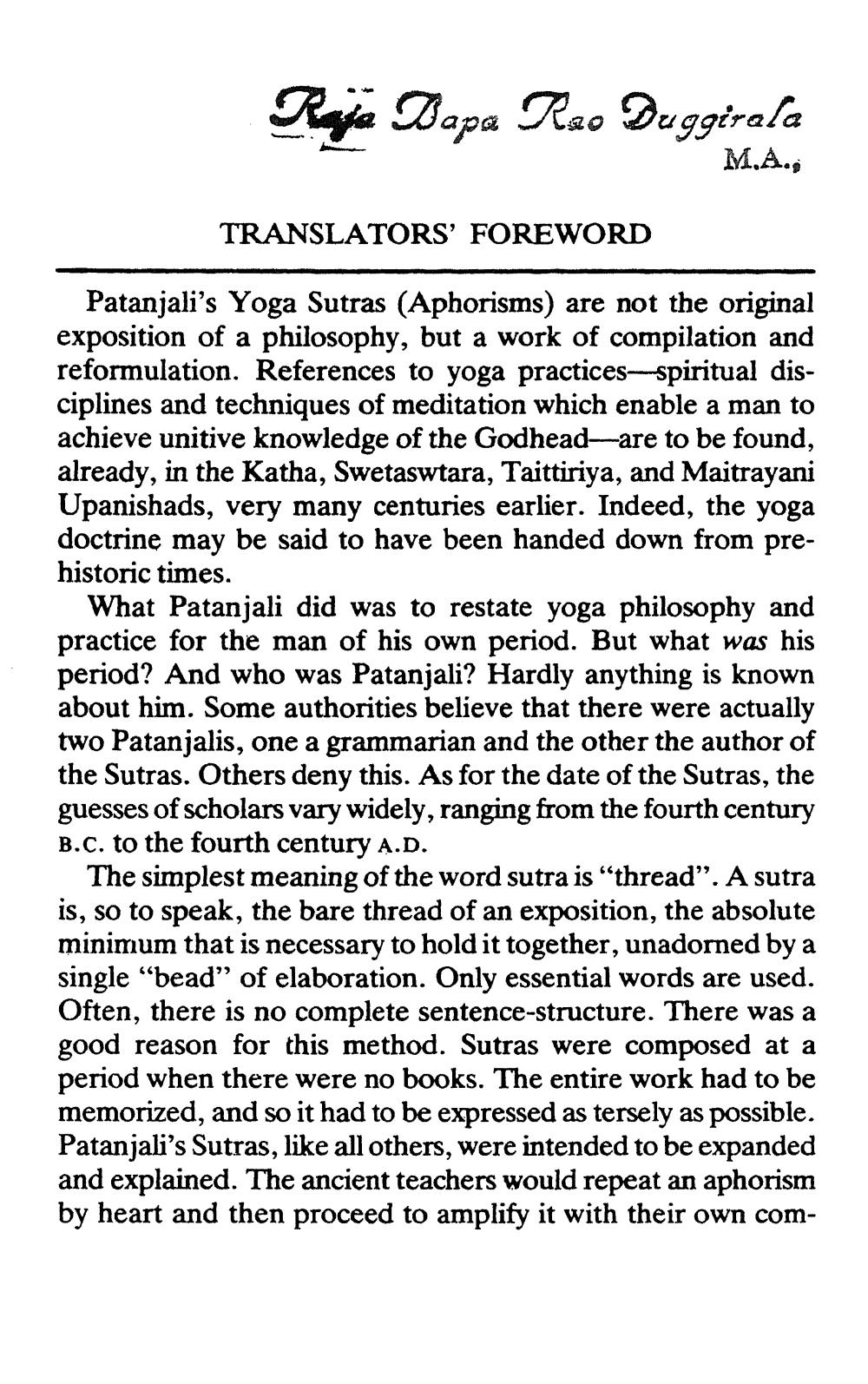Book Title: Yoga Aphorisms of Patanjali Author(s): Prabhavnanda Swami, Christopher Isherwood Publisher: Ramkrishna Math Madras View full book textPage 5
________________ Raja Dapa Rao Duggirala M.A. TRANSLATORS' FOREWORD Patanjali's Yoga Sutras (Aphorisms) are not the original exposition of a philosophy, but a work of compilation and reformulation. References to yoga practices-spiritual disciplines and techniques of meditation which enable a man to achieve unitive knowledge of the Godhead-are to be found, already, in the Katha, Swetaswtara, Taittiriya, and Maitrayani Upanishads, very many centuries earlier. Indeed, the yoga doctrine may be said to have been handed down from prehistoric times. What Patanjali did was to restate yoga philosophy and practice for the man of his own period. But what was his period? And who was Patanjali? Hardly anything is known about him. Some authorities believe that there were actually two Patanjalis, one a grammarian and the other the author of the Sutras. Others deny this. As for the date of the Sutras, the guesses of scholars vary widely, ranging from the fourth century B.C. to the fourth century A.D. The simplest meaning of the word sutra is “thread”. A sutra is, so to speak, the bare thread of an exposition, the absolute minimum that is necessary to hold it together, unadorned by a single "bead” of elaboration. Only essential words are used. Often, there is no complete sentence-structure. There was a good reason for this method. Sutras were composed at a period when there were no books. The entire work had to be memorized, and so it had to be expressed as tersely as possible. Patanjali's Sutras, like all others, were intended to be expanded and explained. The ancient teachers would repeat an aphorism by heart and then proceed to amplify it with their own comPage Navigation
1 ... 3 4 5 6 7 8 9 10 11 12 13 14 15 16 17 18 19 20 21 22 23 24 25 26 27 28 29 30 31 32 33 34 35 36 37 38 39 40 41 42 43 44 45 46 47 48 49 50 51 52 ... 163
